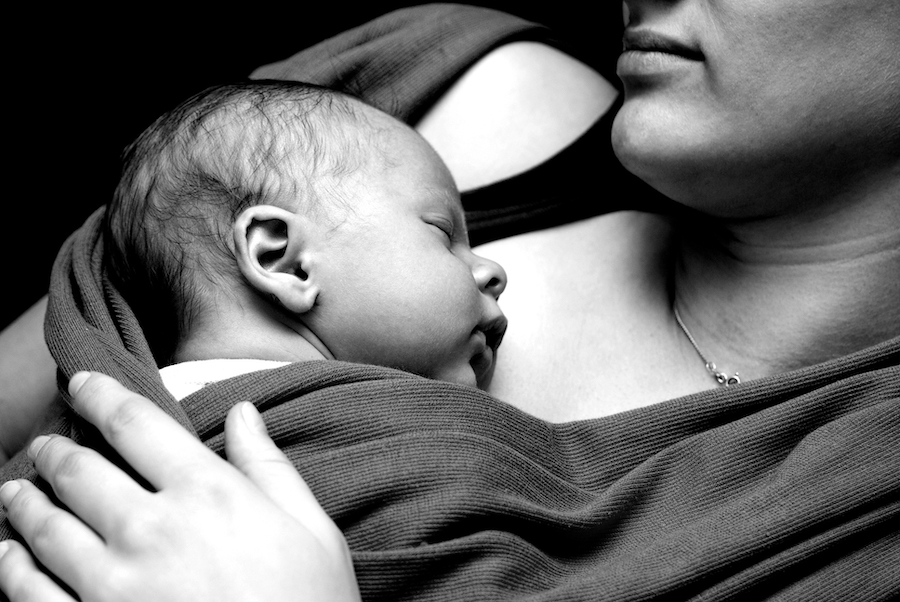What do you need to know about allergy season?
The end of winter and start of spring can be a wonderful time of year, bringing warmer weather and longer days and the promise of summer to come but for children with hay fever, the onset of spring marks the start of an annual ordeal as seasonal allergies leave them struggling with itchy eyes, sneezing, a runny nose, and other irritating allergy symptoms.
Allergies (including food allergies) are the most common conditions affecting kids in the United States. In 2021, 18.9 percent of children suffered from a seasonal allergy (such as hay fever, allergic rhinitis or allergic conjunctivitis) according to data from the CDC. If your child is one of the millions of youngsters affected by allergic rhinitis, our guide to helping them through allergy season may help you alleviate their allergy symptoms and enjoy the warmer months of the year.
When is allergy season?
Allergy sufferers may experience symptoms at any time of year as certain allergens, such as dust mites and pet dander, will always be a problem. However, some months of the year bring particular challenges for children with seasonal allergies as pollen season marks an increase in the presence of allergy triggers, such as tree pollen and grass pollen.
-
Tree pollen is particularly prevalent in early spring, generally in late March and April
-
Grass pollen arrives in the late spring, usually around May
-
Weed pollen tends to be worse in the summer months, reaching its peak levels in July and August
-
Ragweed pollen generally causes problems for allergy sufferers in late summer and early fall
Furthermore, climate change has had an impact on pollen counts, causing the pollen season to start earlier in the year and last longer as high carbon dioxide levels encourage plants to produce more pollen. As the period in trees, grasses and ragweed produce pollen increases, there is likely to be an increasing overlap of pollen seasons, making life increasingly difficult for those with seasonal allergies.
Which areas have the worst pollen counts?
A report by the Asthma and Allergy Foundation of America (AAFA) analyzed the seasonal pollen levels, allergy medicine use and the number of allergy specialists in metropolitan areas, releasing a report highlighting “The Most Challenging Places to Live With Spring Allergies”. The metropolitan area with the worst ranking was McAllen, Texas, followed by Jackson, Mississippi, Providence, Rhode Island, and Memphis, Tennessee. By region, the areas identified as most problematic for people with spring allergies were:
-
Northeast: Providence, Rhode Island
-
South: McAllen, Texas
-
MidWest: Toledo, Ohio
-
West: Fresno, California
What are the signs and symptoms of seasonal allergies in children?
Allergic rhinitis, more commonly known as hay fever, develops when the immune system becomes sensitized to a particular allergy trigger, releasing histamines to counter the allergen. It is these histamines that cause allergy symptoms. Allergic rhinitis can be either seasonal, typically caused by tree, grass or weed pollens, or perennial (year-round), which is usually triggered by pet dander, dust mites, or mold.
Common hay fever symptoms
-
Nasal congestion or a runny nose
-
Itchy and/or watery eyes
-
Swollen eyelids
-
Sneezing
-
Coughing
-
Fatigue
-
Skin irritation
How to tell the difference between the common cold and seasonal allergies
There are many similarities in the symptoms of the common cold and those of seasonal allergies. The primary difference between the common cold and seasonal allergies is the fever that often comes with a cold. Indications that a child’s symptoms may be caused by allergies include itchy eyes and/or nasal irritation. However, if you are in doubt as to the cause of your child’s symptoms, it may be time to visit your physician or an allergist.
How to prevent and treat children’s seasonal allergy symptoms
One of the most effective ways to help children with seasonal allergies is to avoid allergens and known triggers, according to advice from the Centers for Disease Control and Prevention. If your child struggles during the spring allergy season, consider booking an appointment with an allergist for a more accurate allergy diagnosis and to identify their allergy triggers. Are they more susceptible to grass pollen or tree pollen? Do they also suffer from allergic reactions to dust mites or pet hair? Finding answers to questions such as these help parents and healthcare providers develop more effective prevention strategies and treatment plans.
How to avoid your child’s allergy triggers
-
Check the pollen count - Getting outside and playing in the sun is great for kids, but if you are the parent of a child with pollen allergies it is important to take note of the weather and the pollen count during allergy season. Many weather reports now include a pollen count and you can check Pollen.com and similar sites for more accurate updates on the current pollen count.
-
Be vigilant about washing and changing clothes - Keeping your child indoors on dry, windy days, or days with a particularly high pollen count may help minimize their exposure to triggers, but you also need to take care not to track allergens into the home. If you or your child has been outside, get into the habit of washing and changing clothes once you re-enter the house.
-
Run the air conditioning rather than opening windows - Leaving the windows open may provide a lovely cooling breeze through the house, but it also opens the home to pollen, potentially triggering seasonal allergies. If you have an air conditioner, use this to cool the home instead.
-
Don’t hang clothes to dry outside - Try to use a dryer rather than putting clothes on the line to dry as it can pick up pollen and other allergy triggers if left outside.
-
Keep the home clear of other potential allergens - Keeping children inside on high pollen count days may help them avoid seasonal allergy symptoms but you should also ensure that they are not exposed to other allergens in the home. Keeping the house free of pet dander, dust and mold is particularly important during the allergy season as these can exacerbate symptoms and children may be more exposed to them if they are staying indoors to avoid the high pollen levels.
How to treat your child’s hay fever symptoms
Treatment of seasonal allergies usually revolves around preventing exposure to triggers and treating symptoms when they arise. Depending on the severity of the allergic reaction, there are over-the-counter and prescription medication options to reduce seasonal allergy symptoms.
Always read the labels on any allergy medicine carefully before administering it to a child and consult with your family physician or allergist for advice on the best treatment option for your child’s symptoms. Here are some of the most common medications used to treat allergic rhinitis:
-
Topical eye drops: Antihistamine eye drops such as Alaway (ketotifen fumarate) may provide relief for itching or watery eyes. Artificial tears may also be a good over-the-counter option for soothing irritated eyes. If your child wears contact lenses, ensure any eye drops can be used while they have their lenses in (although if children suffer itchy eyes as a result of seasonal allergies, glasses may be a more suitable option as contact lenses can attract airborne pollen and other allergens).
-
Decongestant nasal sprays: Using a simple nasal saline spray regularly can be an effective means of flushing out allergens and relieving congestion. There are also over-the-counter corticosteroid allergy nasal sprays available, such as Nasonex (budesonide) or Flonase (fluticasone).
-
Oral antihistamines: Most allergy sufferers will be familiar with oral antihistamines as these are often one of the first treatment options explored when trying to alleviate allergy symptoms. First-generation antihistamines, for example, Benadryl (diphenhydramine), do not last as long as newer medications and often cause drowsiness. Second-generation antihistamines, such as Zyrtec (cetirizine) or Claritin (loratadine), often only need one dose per day and do not cause drowsiness, which may make them a better option for children. Allegra (fexofenadine Hcl), Claritin and Zyrtec are all FDA-approved as liquid formulations for children over the age of two.
-
Oral decongestants: Other over-the-counter decongestants such as Sudafed (pseudoephedrine) may be taken to help reduce nasal congestion.
-
Cromolyn sodium: Cromolyn sodium is an over-the-counter nasal spray used to relieve hay fever by inhibiting the release of histamines. It may also be used as a preventative treatment before symptoms appear. Cromolyn sodium is also available in the form of eye drops, but this requires a prescription.
-
Allergy shots: Also known as “immunotherapy,” allergy shots may be an option if other allergy medicines are ineffective or if medications cause too many side effects. Immunotherapy works by exposing the body to small amounts of allergens over three to five years to build up a resistance to the allergen. In some cases, for example with certain grass and weed pollens, sublingual tablets may be used in the months ahead of the pollen season.
Remember: Always read the label carefully before administering any medication and ensure they are suitable for children. Speak to your pharmacist, allergist or physician if you have any concerns or questions about your child’s allergy medicine.
Back to school during allergy season
Dealing with your child’s seasonal allergies is more manageable at the weekend or when they are at home, but what do you do while they are at school? Whether they have minor symptoms or more serious allergies, it is a good idea to plan ahead and communicate with the school to ensure they have all the relevant information and can take the necessary steps to minimize your child’s exposure to allergens.
-
Inform teachers and school personnel - Speak to the teachers, school nurse and any other relevant members of staff (such as sports coaches) to ensure they are aware of your child’s condition and their treatment plan.
-
Minimize exposure to allergens at school - This may include keeping windows closed when during days with a high pollen count, keeping children away from the blackboard if their condition is exacerbated by chalk dust, or allowing them to remain indoors during recess.
-
Managing allergy medication at school - If your child takes medicine to control allergy symptoms or prevent seasonal allergies, ensure you are on top of their treatment plan and that they have access to the relevant allergy medicines while at school, either by keeping it with them or by giving it to the school nurse or a teacher.
-
Educate your child - Symptoms of seasonal allergies are generally not as serious as those caused by some other allergies, but it is still vital that your child understands their condition and knows how to manage it, whether this involves taking medication or avoiding their triggers while at school.








